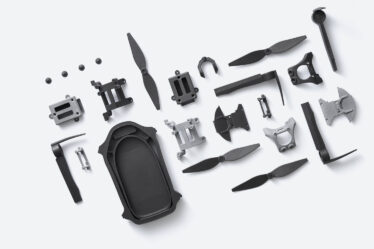Mar 22, 2019 | By Thomas
NASA researchers with the Glenn Research Center (GRC) and Marshall Space Flight Center (MSFC) teamed up to develop GRCop-42, a copper-based high strength alloy with high conductivity. Using powder bed fusion (PBF) 3D printing, NASA researchers successfully 3D printed near-fully-dense GRCop-42 components that are resistant to deformation and remain strong even at elevated temperatures.

From 2014 to 2017, NASA engineers completed development on 3D printing fully dense and usable GRCop-84 (Cu-8 at.% Cr-4 at.% Nb) fuel-film-cooled combustion chambers for the low-cost upper stage propulsion liquid oxygen-methane engine using the PBF additive manufacturing method, culminating in several successful hot-fire tests at MSFC in 2016 and 2017. Building upon that work, the NASA teams moved to development of GRCop-42, which would give higher thermal conductivity at similar strength, and thus higher engine performance than even the 84.

The GRCop-42’s 3D printing process and parameters were developed on a ConceptLaser M2 3D printer, which was also used in the GRCop-84 development and had proven itself ‘copper friendly’ with its inert glovebox and build chamber. According to NASA, initial trials on the 42 parameters were conducted in early 2018. Researchers conducted tests on components made from GRCop-42, such as fuel injector face plates and combustion chamber liners, and found the GRCop-42 components “may [be] equal to or exceed their traditionally manufacturer predecessors.”

« In this study, MSFC and GRC demonstrated that GRCop-42 is a readily printable alloy that can be additively manufactured into fully dense components with consistent properties at higher throughput rates than its predecessor, GRCop-84, » stated NASA. « A 3D print time savings of about 20% is currently being seen, wherein the aforementioned 28-day nozzle now takes a little over 22 days, almost a week in time advantage. »
« The next step will be to run several large tensile builds with different lots of powder, with specimens scattered across the entire 250-mm build plate to not only verify the parameter set but also rule out any other external effects like position on the build plate or material lot/vendor. »
Posted in 3D Printing Materials
Maybe you also like:


